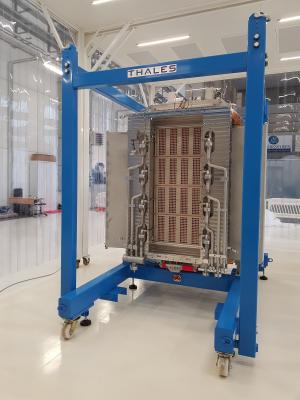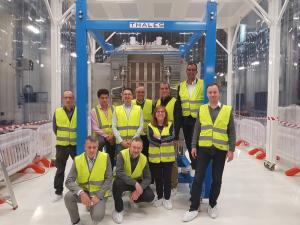Powerful ion source delivered
On SPIDER, one of two testbeds at the ITER Neutral Beam Test Facility, the negative ion source for ITER's heating neutral beam system will be demonstrated at full project specifications. With the recent arrival of a component procured by the European Domestic Agency—the beam source—the test bed is that much closer to completion and operation.
This is the first full-scale ITER ion source, capable of running pulses of up to 3600 seconds at maximum power with hydrogen or deuterium. The 6 MW generated by this beam source in one hour are equivalent to the energy required by roughly 1,000 medium-sized apartments in one day. As a matter of comparison, it is twice as big as the largest existing beam source, ELISE, operating at the Max Planck Institute for Plasma Physics, in Garching, Germany, as part of a wider step-by-step effort to develop the heating system that will contribute to bringing the plasma of the ITER test reactor to a temperature of many million degrees.



